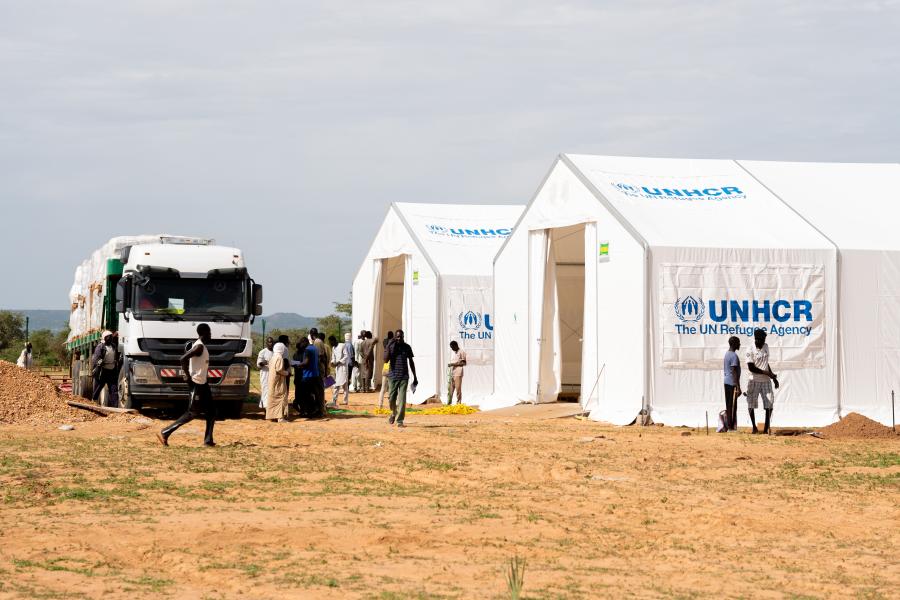Given the significant negative consequences of underfunding, prioritization and realignment have to be done simultaneously with an enhanced effort to mobilize resources across a growing donor base. Resource mobilization will need to take place in a context where humanitarian funding is in short supply across the entire system because of growing pressures on Official Development Assistance, and where earmarking and risk aversion are increasing.
Against this context, UNHCR will need to continue to go beyond business as usual and proactively pursue potential opportunities. For example, it will build on the momentum driven by the Grand Bargain to step up advocacy for increased quality funding. At a time when there are not enough humanitarian funds to go around, an increase in the quality of funding will at least help to facilitate a more equitable and needs-based allocation of available funds.
UNHCR will also continue to explore synergies with development partners, recognizing the inter-linkages between humanitarian work and the wider Sustainable Development Goals. Specifically, given that 80% of refugees and asylum-seekers originate from climate-vulnerable countries, UNHCR is refining its programming with this in mind and will pursue resource mobilization opportunities accordingly. Finally, UNHCR will continue to keep looking beyond the status quo and continue exploring more innovative ways of financing.
Levels of Earmarking | 2012-2023
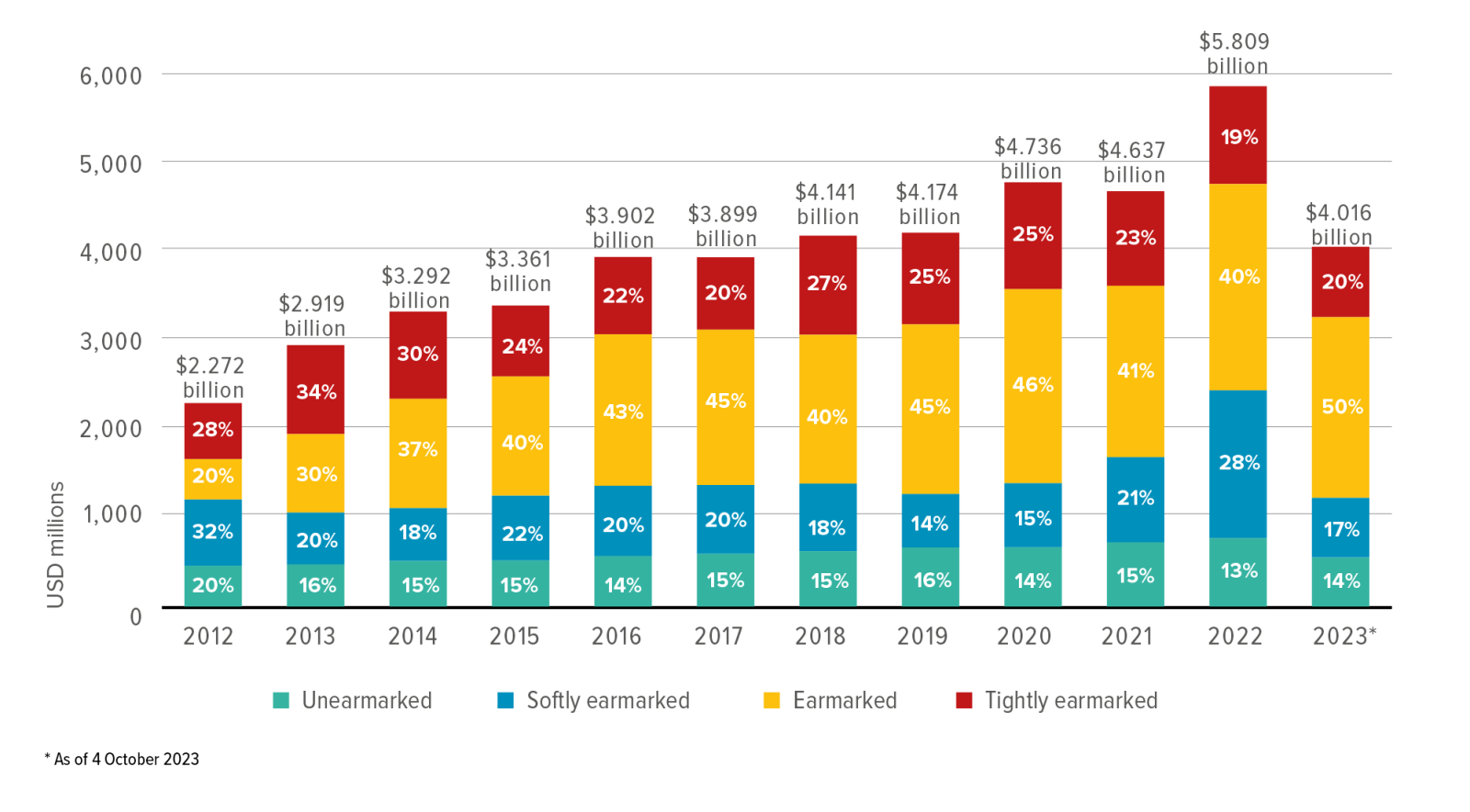
UNHCR’s budget and the Sustainable Development Goals
UNHCR’s budget relates closely to the Sustainable Development Goals. As in previous years, 77% of the budget will contribute to 10 of the Goals, with notable increases compared to the current 2023 budget for SDG 3: Good health and well-being; SDG 4: Quality education; SDG 6: Clean water and sanitation; SDG 8: Decent work and economic growth; and SDG 10: Reduced inequalities.
Raising funds from the public sector
In 2022, contributions from UNHCR’s top 10 donors constituted 69% of total voluntary contributions for the year, compared to 75% in 2021. There was also a shift in the composition of the top 10, which included four National Partners from the private sector. Of these, only one (España con ACNUR) had consistently been in the top 10 since at least 2018. So, while 2022 figures point to a potentially positive trend of diversification, they also underscore the continued importance of public sector donors in helping UNHCR deliver on what member States of the United Nations mandated it to do.
To date in 2023, 18 government donors including the European Union have provided $20 million or more to UNHCR (down from 21 at the end of 2022). The United States remained UNHCR’s largest donor, providing $1.857 billion, responding not only to emerging crises but also maintaining steadfast support in protracted contexts in Africa and the Americas. Germany is the second largest donor at $267 million, followed by the European Union at $253 million.
Engaging public sector donors thus remains a key element in UNHCR’s fundraising strategy. This will entail regular communication at all levels in donor capitals and in the field for UNHCR to demonstrate impact and “value for money”, as well as to communicate about the consequences of underfunding and emerging risks. Communication will also focus on other stakeholders in donor countries – including parliaments, civil society and the media – to help build the overall case for supporting forcibly displaced and stateless people.
The second key element of UNHCR’s fundraising strategy with the public sector is to push for quality funding; that is, funding that is flexible, predictable, and timely.
Top ten donors of multi-year contributions | USD
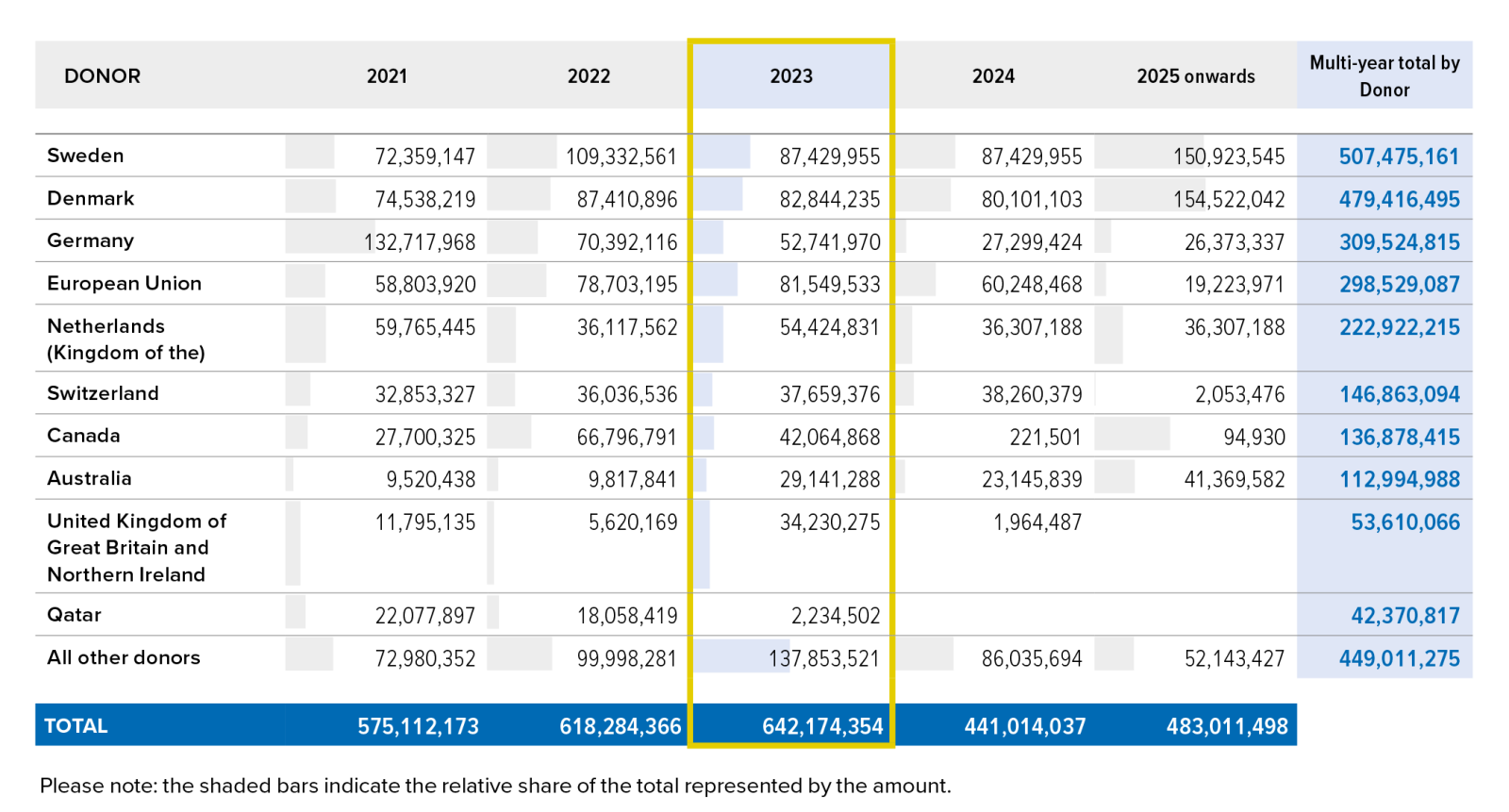
Flexible funding enables UNHCR to plan strategically across its operations and manage its resources efficiently and effectively, and to respond to the unpredictable. It also allows UNHCR to respond to needs in situations that are no longer under the media spotlight.
The top contributors of flexible funding so far in 2023 have been Germany and the United States. Unearmarked funding is a particularly valuable form of flexible funding. Unfortunately, contributions to UNHCR have become more earmarked over the past decade, with unearmarked funding declining as a share of total contributions from 16% in 2013 to 14% so far in 2023. 66% of unearmarked funding this year is from public sources and 34% from the private sector. Overall, Sweden, Norway, and España con ACNUR are the top donors of unearmarked funding in 2023 so far.
The top three operations receiving most unearmarked funds so far in 2023 are Iraq, Jordan, and Yemen. Without unearmarked funds, all three operations would be less than 35% funded 10 months into the year.
UNHCR’s strategy for the expansion of flexible funding is based around three key aims: firstly, to maintain/ increase support among existing government donors, including through enhanced reporting and appropriate visibility aimed at audiences in donor countries and in the field; secondly, to expand the number of flexible government donors, for example by making strategic approaches with flexible funding “champions” and working through the Grand Bargain focus area on quality funding; and thirdly, to explore approaches to fundraising for flexible contributions (thematic fundraising and innovative financing). Multi-year funding provides valuable predictability and continuity for UNHCR’s operations from one year to the next. 15% of the voluntary contributions for 2023 were multi-year funds ($642.2 million) with 24 government donors and 31 private donors providing multi-year funding, top among which are Sweden, Denmark, and the European Union. 49% of the 2023 portion of multi-year funding is however earmarked or tightly earmarked, limiting UNHCR’s ability to allocate resources where they were needed the most.
The third key element of UNHCR’s fundraising strategy with the public sector is to continue pushing for diversification of its donor base, in order to mitigate over-reliance on a few key donors. In 2023 so far, UNHCR’s top 10 donors provided 74% of the voluntary contributions (up from 69% in 2022). With contributions still expected before the end of the year, these numbers and the level of diversification they represent may still change.
UNHCR’s efforts to diversify its donor base with the public sector will focus on three streams, based on the human resources it has available. First, it will step up efforts to reach out to potential new donors as well as to reactivate relationships with donors that have ceased to contribute to UNHCR. Second, it will seek to encourage traditional and non-traditional donors to increase their contributions. In this regard, “middle countries” – those that are not among the biggest host countries or biggest donors – could play a key role of advocating for support for comprehensive refugee responses, including through calling for the continued expansion of the donor base beyond the large and traditional donors.
Third, multilateral sources, and in particular the inter-agency pooled funds, present one opportunity to diversify UNHCR’s donor base in a more sustained way. A recent mapping done by the Multi-Partner Trust Fund Office shows how these funding sources have almost tripled since 2010 from $1.2 billion to $3.25 billion in 2022. This includes funding from humanitarian funds (the vast majority from CERF and country-based pooled funds), along with development funds broadly speaking, including climate, peacebuilding and transition. For 2024, UNHCR will continue to build up its knowledge base of multi-partner trust funds and pursue these more actively. Since these sources tightly earmark their funding and allocation decisions are taken in the field by, for example, UN country teams, efforts will be directed to equip field staff with the tools necessary to engage effectively.
UNHCR’s partnerships with development actors have made a significant impact in areas hosting forcibly displaced populations, improving services and opportunities for all. In 2023, UNHCR launched the “Strategy on engaging with development actors” to unlock the full potential of its engagement with development partners – one of eight focus areas identified in the UNHCR Strategic Directions 2022- 2026. UNHCR hopes that the common vision of enabling refugees, internally displaced, stateless and host communities to enjoy their rights, and socially and economically empowering them to become self-reliant and agents of sustainable development, will galvanize all stakeholders in the pursuit of the objectives of the Global Compact on Refugees (GCR). In cases where UNHCR has a clear comparative advantage and in line with established criteria, UNHCR operations may also establish operational partnerships with development actors, including by implementing or co-implementing projects funded by them.
UNHCR will also make significantly more effort to draw on existing and new sources of funding to implement climate-related activities so that the increasing numbers of forcibly displaced and stateless people fleeing from climate-fuelled crises, and/or living in climate-vulnerable countries, are protected where needed, resilient to the impacts of climate change, and living self-sufficient lives.
Raising funds from the private sector
In 2024, UNHCR will continue its push for private sector engagement through the development of a new engagement strategy that will move its private sector fundraising towards $2 billion. As well as seeking an increase in funding, UNHCR will aim to become the partner of choice by diversifying and expanding how it works with private sector organizations and individuals.
In recent years, UNHCR’s private sector strategy has seen steady growth in income, and in 2022, it surpassed the $1 billion goal. Such an outstanding achievement was a result of the incredible response to the Ukraine emergency. This would not have been possible, however, without the year-on-year growth achieved prior to this, which developed a donor base and relationships that allowed such acceleration.
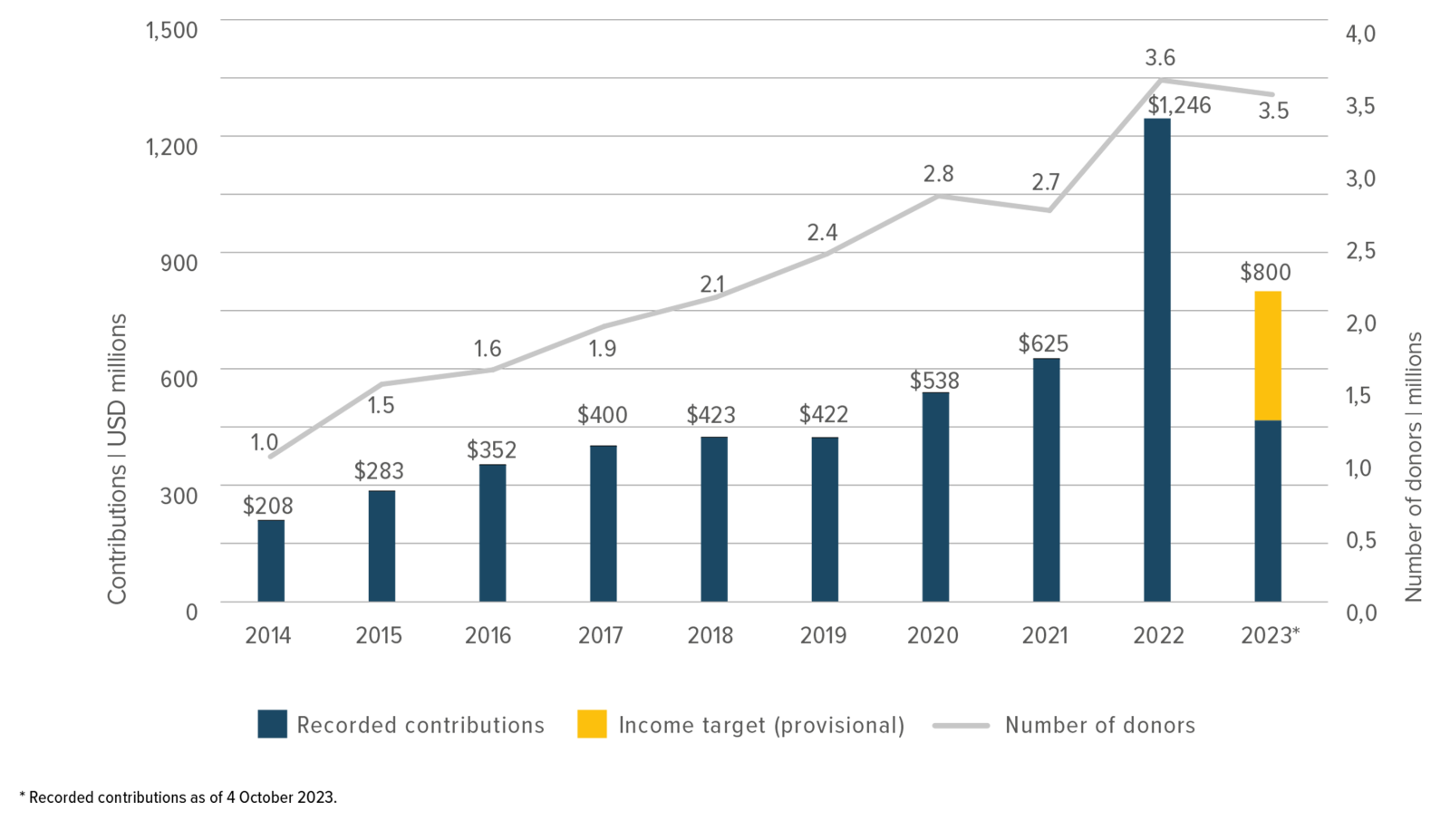
In 2023, private sector income is expected to reach $800 million. Despite a decrease in income compared to 2022, the figures continue the rising trend seen in previous years. The private sector currently contributes to around 12% of UNHCR’s overall funding, including high levels of flexible funding.
UNHCR’s recent achievements with private-sector fundraising present a unique moment for the Office to reflect on the vital role the private sector can play in addressing forced displacement. This will see it take the previous $1 billion strategy forward and set out an all-of-organization approach to fully engaging with the private sector as a collaborative partner.
For 2024, UNHCR will seek to consolidate the support it received in 2023 and strengthen existing fundraising programmes, while recognizing there are headwinds that may impair private sector donors’ ability to maintain such levels of generosity in the near term.
The core priorities are:
- Reach more people around the world by tapping into the growing Individual Giving market and maximizing UNHCR’s current footprint to increase flexible, sustainable and highly predictable individual giving income.
- Regular giving will be a special focus in terms of acquisition, conversion and reactivation. - Digital fundraising and marketing will be prioritized for expanding the donor base, particularly during emergencies. Through “best-in-class” supporter experience, UNHCR will provide stable income after the emergency media spotlight has faded.
- Through enhanced analytics, systems and insights, UNHCR will be able to grow supporter net income, long-term value and engagement to further increase capacity for impact through individual giving.
- Foster dynamic partnerships with corporations, philanthropists, and foundations, igniting fresh, innovative collaborations that drive UNHCR’s mission forward. The focus remains on positioning UNHCR as a best-in-class innovative financing institution.
- Build a robust portfolio of impact-driven partners that offer shared value solutions to the organization, in the form of efficiencies, expertise, innovation, access to quality jobs and cost savings.
- Continue working to enhance synergies on public-private sector partnerships to enhance income, impact and influence.
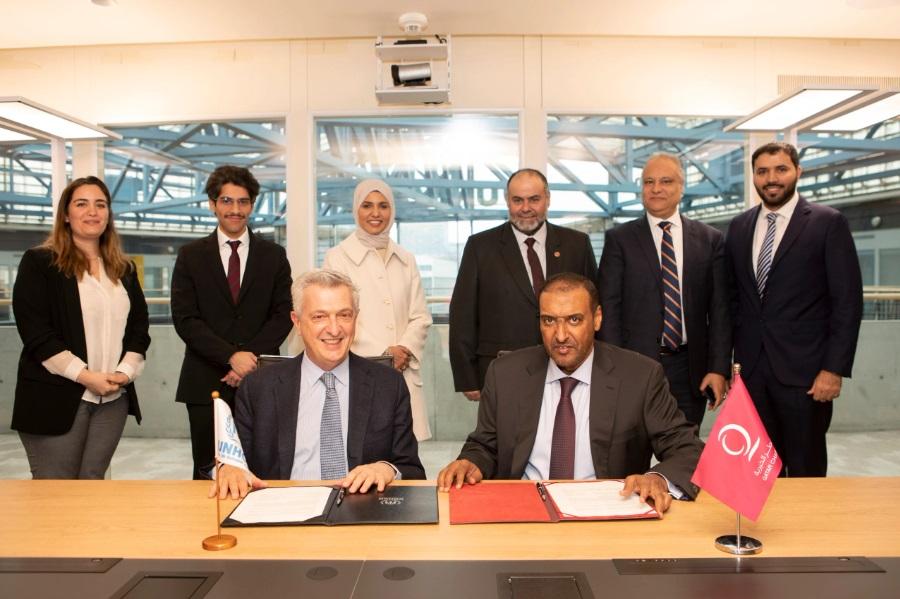

Qatar Charity commits to Islamic Philanthropy to support forcibly displaced communities
Since 2012, Qatar Charity has been a strategic partner of UNHCR, with total contributions exceeding $56 million and reaching more than 1.9 million forcibly displaced people worldwide. In 2023, Qatar Charity and UNHCR signed a Letter of Intent on an Islamic Philanthropy collaboration and three Zakat agreements amounting to about $5 million to help address the most urgent needs of over 50,000 forcibly displaced families in Afghanistan, Bangladesh and Yemen.
Qatar Charity and UNHCR also signed two agreements amounting to over $1.2 million to support more than 30,000 Sudanese refugees in Egypt and Chad through Zakat funds.
Regional Response Plans in 2024
UNHCR-led/co-led inter-agency regional response plans | Population planning figures and funding requirements $13.215 billion requested
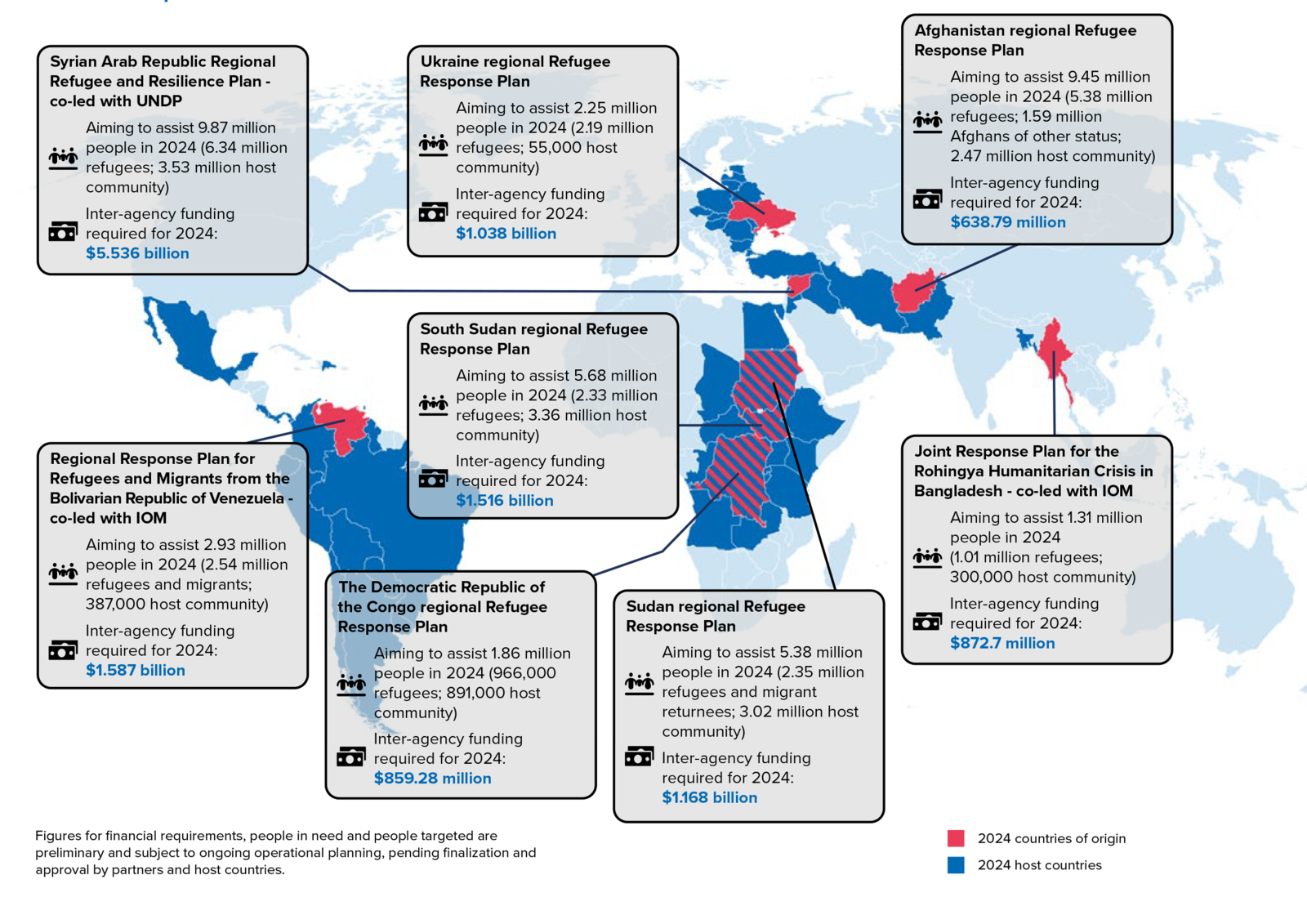
Eight Regional Response Plans will assist host governments protect and support refugees, returnees, migrants and the communities receiving them. Underpinned by the Refugee Coordination Model, these Plans establish transparent, predictable and inclusive frameworks to develop comprehensive and solutions-driven responses to emergencies and protracted situations.
In keeping with the Global Compact on Refugees, the Plans pursue a “whole-of-society” approach and include robust engagement from partners such as NGOs, local and national organizations – which include refugee-led and women-led organizations – faith-based actors, and UN organizations. Strong efforts are being made to localize responses even further.
Programmes will aim to be inclusive, by reflecting the unique needs of all beneficiaries and taking account of each person’s age, gender and diversity characteristics. Recognizing climate change’s devastating impact on displacement, partners will enhance efforts to reduce the effect of climate-related disasters and contribute to environmental sustainability. Protecting from, mitigating and addressing the risks of sexual exploitation and abuse as well as sexual harassment is central to all programmes. While in-kind assistance will continue where appropriate, cash assistance will be a cross-sectoral priority to empower refugees to make choices regarding how they meet their own specific needs. Enhancing resilience and preserving social cohesion remain vital elements of each Plan, reinforcing partners’ commitment to fostering stronger, more inclusive communities, and development actors will be further engaged to ensure solutions are sought from the onset of responses.
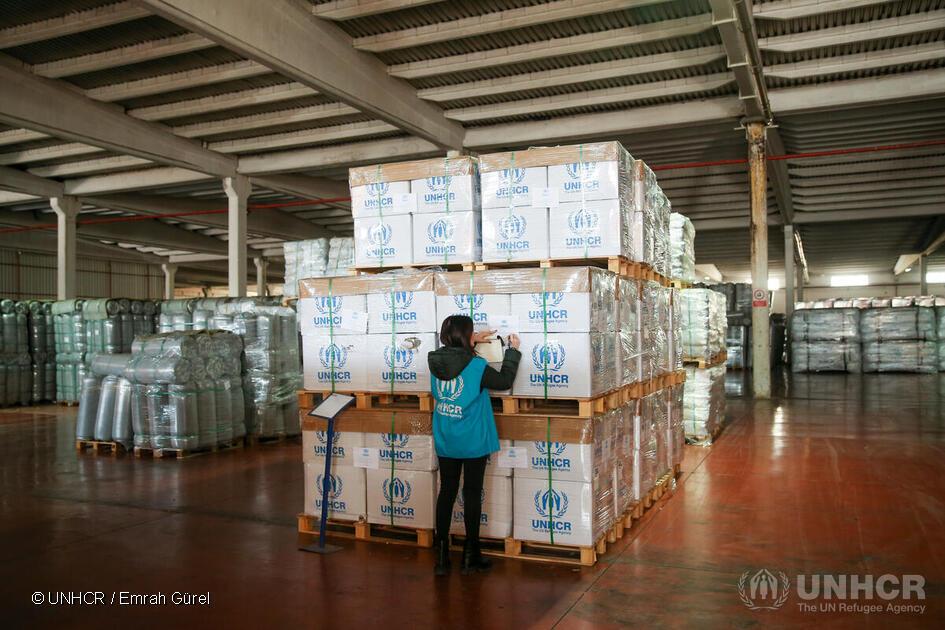

Join Together Society and UNHCR strengthen collaboration to support emergency and protracted displacement situations
Following its donation of gas stoves for Rohingya refugees in Bangladesh in 2022, the Korean organization Join Together Society (JTS) stepped up again in 2023, supporting UNHCR’s response to the earthquake emergency in the Syrian Arab Republic and Türkiye by donating hygiene products such as soaps, sanitary napkins and shampoo, worth approximately $380,000.
UNHCR will continue developing its relationship with JTS in 2024 to support forcibly displaced people in emergency and protracted situations.
